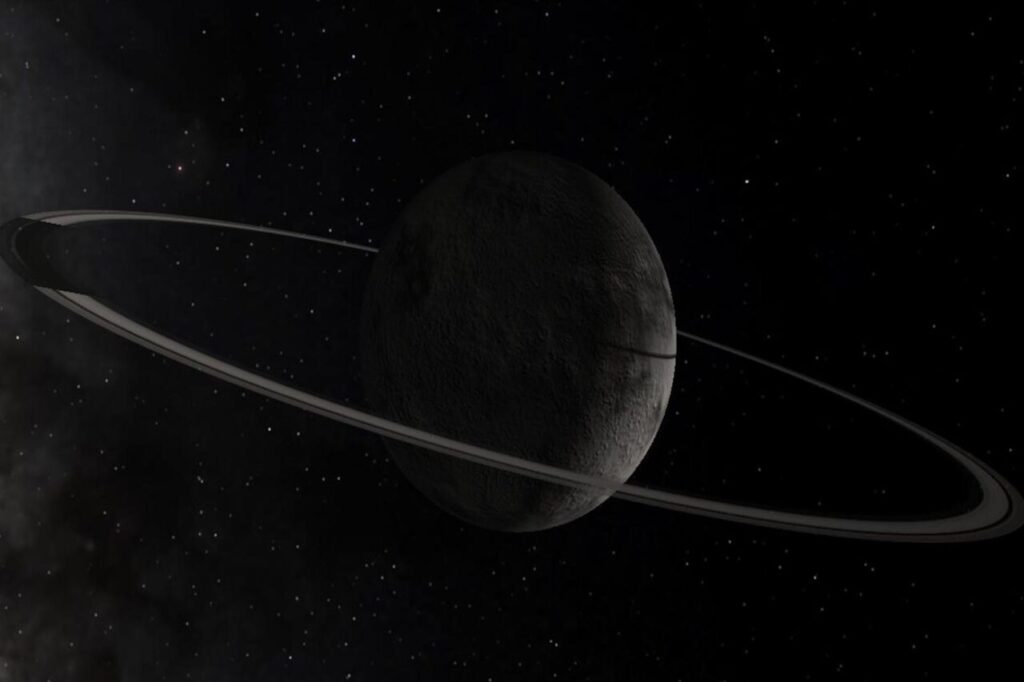
UPDATE: Astronomers have confirmed that Chiron, a small icy world in the outer solar system, may be forming its own ring system in real time. This unprecedented event offers a rare glimpse into the evolution of celestial bodies, with findings just published in The Astrophysical Journal Letters.
The team from the Pico dos Dias Observatory in Brazil observed Chiron crossing in front of a distant star in September 2023. As Chiron passed, the star’s light dimmed multiple times—an anomaly indicating the presence of a ring system or possibly a cometary tail. The researchers noted three well-defined rings around Chiron at distances of 170 miles (273 kilometers), 202 miles (325 kilometers), and 272 miles (438 kilometers) from the centaur, and a fourth, more distant ring approximately 870 miles (1,400 kilometers) away.
This groundbreaking observation is highly significant. Unlike the well-known rings of Saturn, the formation of rings around smaller celestial bodies like Chiron has rarely been documented. Discovered in 1977, Chiron was the first object identified between Saturn and Uranus that did not fit the classification of a planet or moon, leading to the designation of a new category of celestial objects known as centaurs.
Why This Matters Now
The implications of these findings are enormous for the scientific community and our understanding of planetary formation. If Chiron is indeed developing a ring system, it could provide critical insights into how ring systems around larger planets like Saturn took shape over time. The research team, led by Chrystian Luciano Pereira, a postdoctoral researcher at the National Observatory (ON/MCTI), is eager to conduct further observations to confirm the status of the fourth ring and monitor changes in the existing rings.
The discovery raises questions about the dynamics of smaller celestial bodies and their potential to host ring systems. Astronomers are particularly interested in whether the material is stable, or if it will eventually coalesce into a moon—a process determined by its position relative to the Roche limit, which dictates the distance within which a smaller body would disintegrate.
What’s Next?
The research team is planning additional observations of Chiron as it continues to pass in front of distant stars. Each observation will provide more data to further understand the nature of the material surrounding this intriguing centaur. Scientists and astronomy enthusiasts alike are watching closely; this unfolding scenario could redefine our knowledge of ring formation in the solar system.
Stay tuned for more updates as astronomers keep a watchful eye on Chiron. This rare opportunity to witness ring formation in real time is not just a scientific milestone but a captivating moment in our quest to understand the universe’s many mysteries.






